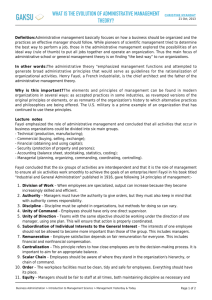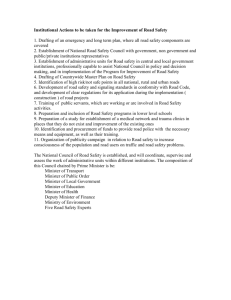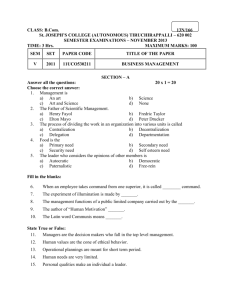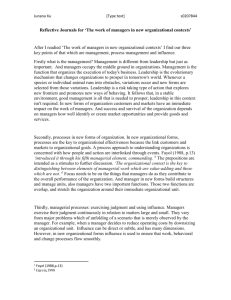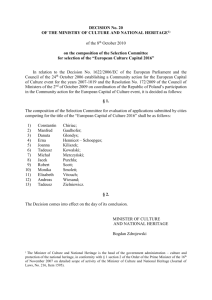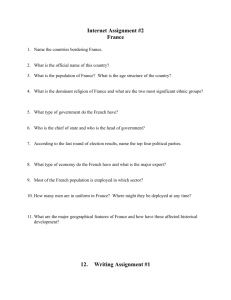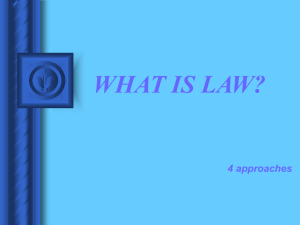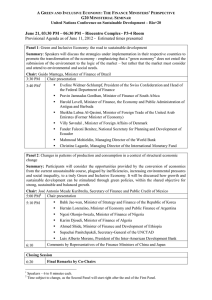PUBLIC ADMINISTRATION
advertisement
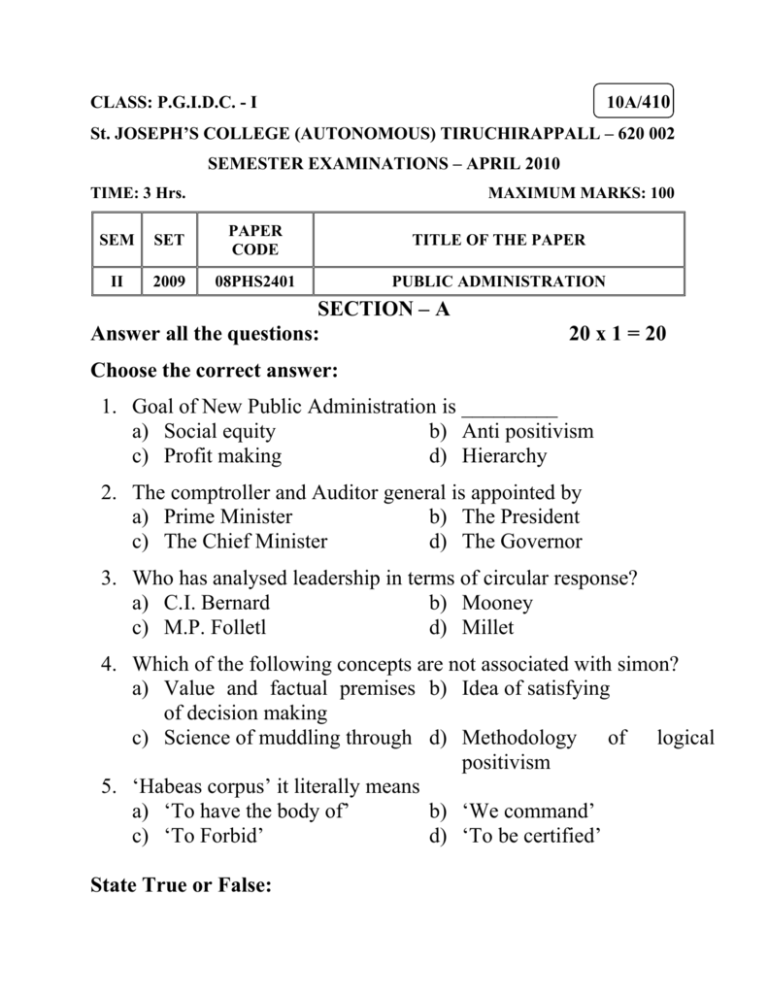
10A/410 CLASS: P.G.I.D.C. - I St. JOSEPH’S COLLEGE (AUTONOMOUS) TIRUCHIRAPPALL – 620 002 SEMESTER EXAMINATIONS – APRIL 2010 TIME: 3 Hrs. MAXIMUM MARKS: 100 SEM SET PAPER CODE TITLE OF THE PAPER II 2009 08PHS2401 PUBLIC ADMINISTRATION SECTION – A Answer all the questions: 20 x 1 = 20 Choose the correct answer: 1. Goal of New Public Administration is _________ a) Social equity b) Anti positivism c) Profit making d) Hierarchy 2. The comptroller and Auditor general is appointed by a) Prime Minister b) The President c) The Chief Minister d) The Governor 3. Who has analysed leadership in terms of circular response? a) C.I. Bernard b) Mooney c) M.P. Folletl d) Millet 4. Which of the following concepts are not associated with simon? a) Value and factual premises b) Idea of satisfying of decision making c) Science of muddling through d) Methodology of logical positivism 5. ‘Habeas corpus’ it literally means a) ‘To have the body of’ b) ‘We command’ c) ‘To Forbid’ d) ‘To be certified’ State True or False: 6. 7. 8. Public Administration is the management of affairs of the government it all levels. Human relation theory of organization rejects formal institutionalization. The real executive head of central government is Prime Minister. 9. The parliamentary system of government is prevaling in India. 10. The senate enjoys the power of confirming the treaties executed by the president. Fill in the blanks: 11. _______ is the pioneer of New Public Administration. 12. Henry Fayol is called the father of _________. 13. The word ‘administer’ is derived from the Latin word 14. The chairman of the Rajya Sabha is ________. 15. Public Accounts Committee was set up in ________. Match the following: 16. Quo warranto - a) Arthasthra 17. Santhanam committee Report - b) Higher Education for Public Service - c) ‘by what authority or warrant’ - d) capacity to influence others to follow 18. The Hall Mark leadership 19. Henry Report 20. Kautilya - e) prevention of corruption SECTION – B Answer all the questions: 5 x 7 = 35 21. a. Examine the meaning and scope of Public Administration? OR b. Distinguish between the Public Administration and Private Administration. 22. a. Explain the nature and principles of buneaveratic theory with reference to Marx and Webers view. OR b. Narrate the participative Management of Mcgregor. 23. a. Analyse the importance of the council of Ministers. OR b. Asses the role of Governor in the state executive. 24. a. Explain the theory of leadership and list the qualities of a good leader. OR b. Examine the views of Herbert Simon on Decision making. 25. a. How Legislation, Executive and Judiciary system control the administrative system. OR b. What are the types of Political Executives. SECTION – C Answer any THREE questions: 3 x 15 = 45 26. Narrate the Goals and Anti-goals of New Public Administration. 27. Explain the classical theory of Fayol. 28. What are the methods of election and powers of the president of India? 29. Explain the different types of communication? 30. Describe the concept of accountability and control.

